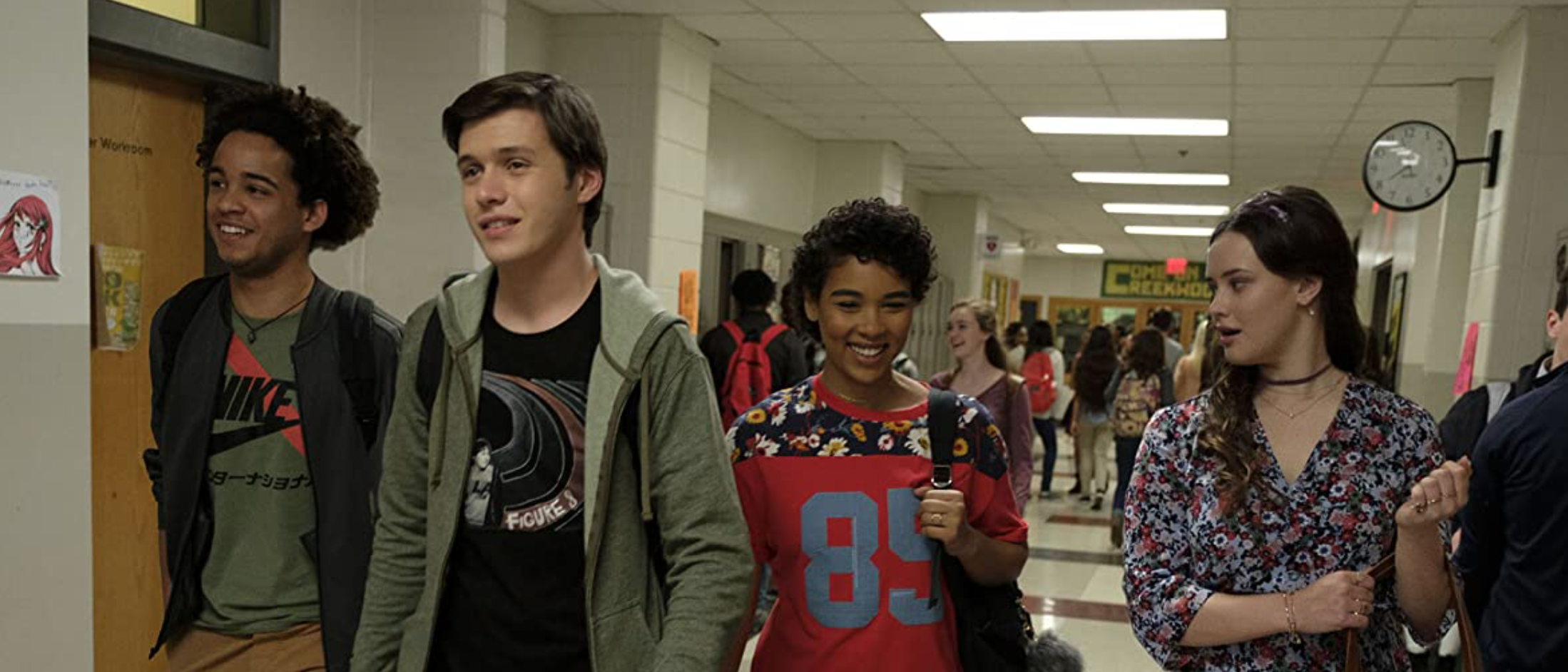For many queer youth, “coming out of the closet” is treated as the ultimate milestone, a crucial step before one is able to truly live their life with pride. The ability to step into the world and live your life unabashedly is a privilege worthy of celebration. However, the way “coming out” has been treated in the media has twisted a beautiful milestone into something akin to an obligation that must be fulfilled before one can claim membership in the queer community.
In many cases, “coming-out” becomes the sole driver of character growth within queer media. In the 2018 film Love, Simon, the titular Simon’s (Nick Robinson) arc is centered around him coming to terms with his sexuality. While Simon’s story was an important one to tell, it leaves a rather bitter taste in the mouth as it feels as though Simon’s character does not extend past the struggling gay teenager archetype and his journey towards coming out. In instances like this, queer characters in media are made to feel rather one-dimensional, as though their stories cannot be told if it does not revolve around the revelation of their sexualities.
This weaponization of coming out in queer media does not only impact the stories that can be told about queer characters. It also creates a toxic expectation and pressure for queer characters to come out, and that the people around them have a right to every detail of their sexuality. When Simon’s sexuality is publicized in a manner outside of his consent and control, many of his friends, such as his best friend Leah (Katherine Langford), feel betrayed—as though they were owed the revelation of his sexuality in the first place. This not only limits the stories that can be told about queer characters, but also sets the precedent that others are owed this truth while also making not coming out seem like an act of betrayal.
The expectations of coming out also greatly affect the ability of a character to “exist as queer” within their own story. Far too many times, queer characters are treated as though they have to meet a certain quota of queerness if they are to have any hope of being recognized by both fellow characters and the audience. In the third season of the Netflix series Sex Education, the end of Eric (Ncuti Gatwa) and Adam’s (Connor Swindells) tumultuous relationship comes when Adam continues to come up short of Eric’s expectations of a partner. Following his coming out at the end of the show’s second season, Adam’s relationship with Eric in the third season is heavily conditioned by this constant expectation to come-out and meet certain expectations for his queerness in order to validate his relationship with Eric and his own experience with his sexuality. However, Adam’s general inexperience with this new facet of his sexuality, as well as his less overt style of expressing his queerness is treated as something wholly negative. Queer characters are not only expected to have everything about their sexuality figured out, but are also expected to constantly express their sexuality in an explicit way or run the risk of being disregarded as “not queer enough.”
The pressure to come out and meet a certain standard of queerness in the media also disregards the nuances of race and culture that affect how queerness is experienced. For many queer persons of color, one’s queer identity can not be divorced from their racial background and cultural experience. In many cases, race completely shifts how sexuality and gender are experienced, such as the unique relationship black femmes have with femininity. In the Love, Simon followup Love, Victor, Victor (Michael Cimino) and Rahim’s (Anthony Keyvan) struggle with their queerness and coming out as two characters of color. The depiction, however, is heavily centered on the white experience, one which often centralizes coming out as the most important aspect of being queer rather than the many individual experiences and milestones shared within different facets of the queer community. This essentially ignores the unique experiences people of color have with both conceptualizing and exhibiting their own queerness especially as they navigate a world that tries to divorce one facet of their identity from the other.
“Coming-out” in queer media has transformed into a trope that heavily limits character depth and growth. Furthermore, the necessity for queer characters to come out and meet a certain quota of queerness simultaneously perpetuates dangerous expectations of queer individuals and centers a very limited view of what it means to be queer on the whole. While coming-out remains a milestone worthy of celebration, the way it is currently used as a narrative tool is wholly flawed and a major hindrance to storytelling within queer media. Instead, creators should try to shift focus to the vibrant and complex lives of queer individuals beyond the closet door, from the intersection of queerness and other identities to the unique role queerness plays in the conceptualization and perception of the arts.





